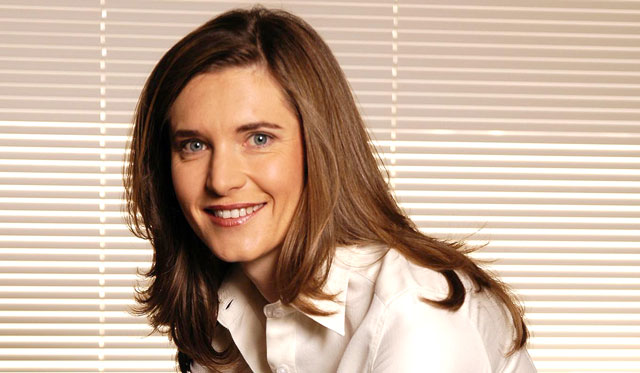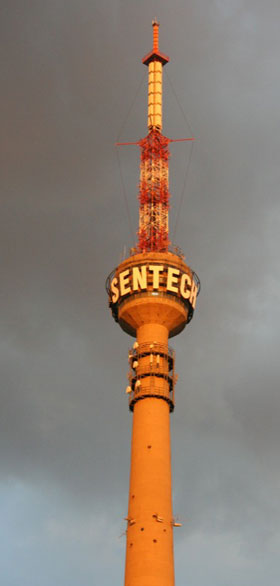
As e.tv and government head to court this week in a dispute over who should own and manage the crucial set-top box control system for digital terrestrial television (DTT), state-owned signal distributor Sentech has moved to allay fears that it will charge what it likes if it manages the system.
E.tv is challenging a decision by communications minister Dina Pule that Sentech will be responsible for the control system. The free-to-air broadcaster has described Pule’s decision, taken in May 2012, as unlawful and wants the court to rule that she acted outside of her powers in doing so. Until the minister made the decision, e.tv and the SABC were going to manage the control system together.
In a supplementary affidavit, filed by Sentech in the high court in Johannesburg on 16 October, the company’s CEO, Setumo Mohapi, says it has notified both e.tv and the SABC that it will “not levy any tariffs on the broadcasters for the set-top box control service”. He says it is therefore “incorrect” for e.tv to state, as it does in its founding affidavit to the court, that free-to-air broadcasters must “simply pay what is asked of them”.
But in a further affidavit, e.tv chief operating officer Bronywn Keene-Young takes exception to Mohapi’s claim that the control system will be provided free of charge, warning that Sentech will recover the costs from free-to-air broadcasters in other ways.
Among other things, the control system will ensure compliance with a minimum set of specifications for set-top boxes and prevent grey imports.
Keene-Young says e.tv only received the letter about prices from Sentech on 2 October, almost three weeks after the broadcaster had instituted its litigation against minister Pule and two days before Sentech delivered its answering affidavit. The assurance about not charging for access to the control system, she adds, “does not adequately address e.tv’s concerns at all”.

“Even if Sentech is not charging the broadcasters directly, it will still be liable for the costs concerned,” Keene-Young says. “It is thus almost inevitable that Sentech will seek to recoup the money it spends in this regard by charging the broadcasters higher fees for other services. This is especially concerning to e.tv given that the letter makes it plain that the costs of ‘any [digital terrestrial television] services provided by Sentech’ to e.tv would be for the latter’s account and is extremely vague as to the calculation of costs. This is quite apart from the fact that it is not clear that Sentech’s statement applies also to future upgrades of the system.”
In her supplementary affidavit, Keene-Young says Sentech and Pule have “repeatedly contradicted themselves” about the cost of implementing and managing the control system.
“The minister’s initial answering affidavit suggested that the cost of upgrading the Sentech conditional access system (including maintenance) would be no more than R7m,” she says. “The minister’s deponent [her technical adviser Roy Kruger] now states that the upgrade cost is R3m.”
Keene-Young says that Mohapi states in Sentech’s supplementary affidavit that the direct capital cost of implementing set-top box control on the basis of an existing Sentech system would be R1,2m. “This directly contradicts the figures provided by Sentech to parliament’s select committee on labour and public enterprises on 15 August 2012,” she says. “In that presentation, Sentech indicated that, excluding annual maintenance costs of R3m, the funding requirements for set-top box control would be R7m. This is almost six times the figure relied upon in Sentech’s supplementary affidavit.”
Which boxes?
Meanwhile, a dispute has erupted between the ministry of communications and Sentech on one side and e.tv on the other about whether free-to-air broadcasters can or should go their own way on set-top box control systems.
In Sentech’s supplementary affidavit, Mohapi argues that the SA Bureau of Standards (SABS) makes it clear that the control system applies only to government-subsidised boxes. Government has agreed to subsidise the cost of set-top boxes into 5m of SA’s poorest homes.
“There is nothing in [the standard] that requires a control system to be in place in all set-top boxes in order to protect the local manufacturing industry,” Mohapi says.
“There is also nothing in [the standard] that requires a control system to be in place in all set-top boxes in order to prevent grey imports or non-conforming boxes from finding their way into the market. Nor does set-top box control have any relevance with specific regard to broadcasters providing a defined user interface on the digital platform.”
However, e.tv disputes Sentech’s assertion that the standard does not require all set-top boxes to use the control system and argues that without the same such system being used in all set-top boxes, cheap imports will flood the market, providing, among other things, a poorer experience to television viewers.
It also warns that if the system is hacked — as has happened to Sentech’s satellite control system — then “inadequate and non-conformant set-top boxes could be used in SA to receive free-to-air digital terrestrial television broadcasts”.
“Such non-conformant set-top boxes would likely be manufactured outside the country and sold for low prices — certainly far lower than non-subsidised set-top boxes manufactured in SA and quite possibly lower than subsidised set-top boxes,” says Keene-Young. “The effect of this is that, because of the cheaper prices, many viewers will likely make use of these non-conformant boxes to receive free-to-air broadcasts [and] this would mean that broadcasts of e.tv would not be properly received in the correct format with the correct features to ensure a uniform and reliable viewer experience.”
She says that even in light of the supplementary affidavits filed by Pule’s technical adviser and Sentech, e.tv will push ahead with its litigation, seeking a ruling from the high court that there was no lawful basis for the decision to direct Sentech to take responsibility for the set-top box control system. The court began hearing legal argument on Monday. — (c) 2012 NewsCentral Media
Read more of TechCentral’s coverage of this developing story:




